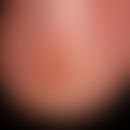Synonym(s)
General definitionThis section has been translated automatically.
First describer: Esser (1918) with a rotation of 180° and Zitelli with a rotation of 90-110°.
A double transposition flap with a stable stem from a subcutaneous vascular plexus and depending on the localization including muscle fibers. The tissue is rotated through an angle of about 90-100° into the defect.
IndicationThis section has been translated automatically.
The bilobed flap is often used to cover defects on the nose, but also on the cheek, chin, perioral and back of the hand. It is suitable for defects of the sebaceous gland rich skin with a diameter of 0.5 to 1.5 cm. In other areas, such as the cheek, defects up to 6 cm2 can be closed with the bilobed flap.
This flap plasty can almost always be performed under local anesthesia.
You might also be interested in
ImplementationThis section has been translated automatically.
Each flap should not be rotated more than 50° so that a total rotation of 100° is not exceeded. This reduces skin compression (dog-ear formation).
The dog ear between the defect and the pivot point should be removed before the flap is rotated into the defect.
The pivot point should be one diameter from the center of the wound (i.e., one radius from the edge of the defect). If the pivot point is chosen at the nose medial to the defect, a so-called "buffalo hump", a nasal hump as a combination of skin stretching and skin compression, may result.
Ideally, the bilobed flap should be chosen as large as the nose will allow. The second flap should be placed in the thinner, easily slidable skin on the side or upper bridge of the nose.
Ideally, the surgeon places the incision lines in the borders of the aesthetic units or subunits. Subminimization on the nose is done widely above the periosteum or perichondrium below the musculature on all sides of the incision. This preserves the vascular supply to the flap and results in less intraoperative bleeding.
In areas other than the nose, the flap may include only subcutaneous fat, but also fascia or muscle. When preparing the flap on the face, one should stay above the SMAS (superficial musculo-aponeurotic system) to spare vessels and nerves.
The first flap should be planned to be the same size as the defect. The second flap is chosen smaller than the first flap so that both lifting defects can be closed comfortably. The compression skin triangles (dog ear) from the defect toward the pivot point and from the tip of the second flap are excised. The shape of the defect and the two flaps can be thought of as two overlapping heart symbols.
The bilobed flap is modeled into the defect with multilayer sutures.
Complication(s)This section has been translated automatically.
Pincushioning, scar retraction (trapdooring): The pincushioning can be treated with intralesional corticosteroids.
Prevention: correct flap design, extensive undermining, careful subcutaneous suturing technique. When applied to the nose: The nasalis transversus and procerus tend to retract below the edge of the cut and should be readapted with absorbable sutures.
When used to cover defects of the nostril and tip of the nose, healing may be limited in the presence of scars, after radiotherapy, nicotine abuse and diabetes mellitus.
LiteratureThis section has been translated automatically.
- Burget GC, Menick FJ (1994): Aesthetic reconstruction of the nose. Mosby, St. Louis.
- Esser J (1918) Pedunculated local nasoplasty with a double lobed flap, covering the secondary defect from the first tip by the second. German Z Chir 143: 385-390.
- Fischer H, Gubisch W (2008) Nasal reconstruction. A Challenge for Plastic Surgery. Dtsch Arztebl Int 105: 741-746.
- Ricks M, Cook J (2005) Extranasal Applications of the Bilobed Flap. Dermatol Surgery 31:941-948
- Zitelli JA (1989) The bilobed flap for nasal reconstruction. Arch Dermatol 125:957-959








